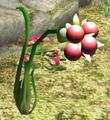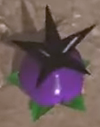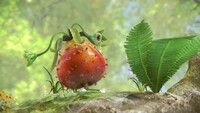User:Dolphinius/SpecBio
This sub-page is purely speculative. It builds upon established information from the Piklopedia, but is altered to be slightly more accurate in terms of biology, evolution and taxonomy. It still may not be entirely accurate, as Pikmin entries are very strange and vague to work with, but I am aiming for at least potential plausibilty. If there were to be an article on Ambuloradicis (its too small of a subject to warrant its own article really), then it would a whole lot less speculative and more formal.
Ambuloradicis
A class of plants that developed animalistic traits, such as nervous systems and muscle tissues. How or why a group of plants evolved such amazing traits is unknown, though its suspected to be a result of experimentation from the long lost civilisation that once lived here. Its common ancestor is, unfortunately, a mystery.
The singular noun of Ambuloradicis is ambuloradix.
WIP
Pikmin
The most well-known Ambuloradicis are the Pikmin, a diverse family that have developed a humanoid physique. Its success comes from its advanced nervous system and a larger, more concetrated neurological organs that allow it to perform more complex tasks. They have develoed higher cognitive functions, and work as a colony to help propogate their species. Thanks to the Pikmins curiosity, drive to explore, symbiotic relationships and adaptive speciation, the Pikmin family has reached near cosmopolitan status.
Red Pikmin
Yellow Pikmin
They also have a strange fascination with bomb rocks.
Blue Pikmin
Hermikmin
Rock Pikmin
Ice Pikmin
Bulbmin
Pellet Weeds
Burgeoning Spiderwort
Pellet Posy
Onions
Onion
Flarlic
Candypop Buds
Common Candypop Bud
Pikanthus expellus
These flowers
Queen Candypop Bud
Pikanthus regina
Candytrap Bud
Malanthus dichroma
Candytraps are a primitive species of candypop, and are one of the last remaining species that have retained their insectivorous diet. As such, any Pikmin tossed into its interior will be consequently devoured. It lures its prey with its bright colours and unusually sweet scent. Its coated in an extremely adhesive material, making any caught unable to escape. Once entrapped, it devours its prey with an acidic substance that quickly dissolves most biological tissues.
Chrysanthoids(?)
Chrysanthemum family, but under a different name.
Mireclops
Quaggled Mireclops
Mireclops Bulb
(This may be excluded)
Parasite? Symbiotic partner? Both?
Ambulofungi
The Ambulofungi are another separate clade that have evolved animalistic traits, such muscle fibres and nervous systems. The most well-known group of these fungal-animals are the Sporovids.
Akin to the Ambuloradicis, the Ambulofungi group has an elusive ancestory and origins.
Startle Spore
Whilst similar in appearance to the Chrysanthoids, this is actually due to convergent evolution rather than a related ancestry. As they require similar hosts, they often come into direct competition if there territories overlap.












